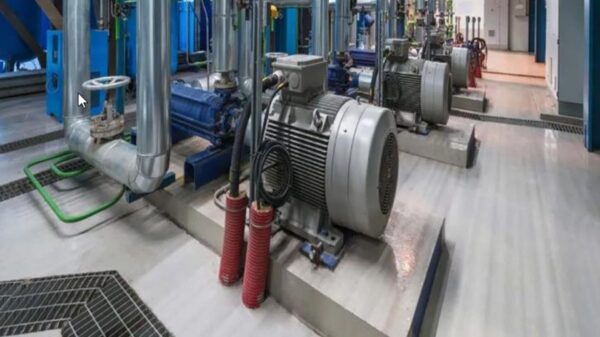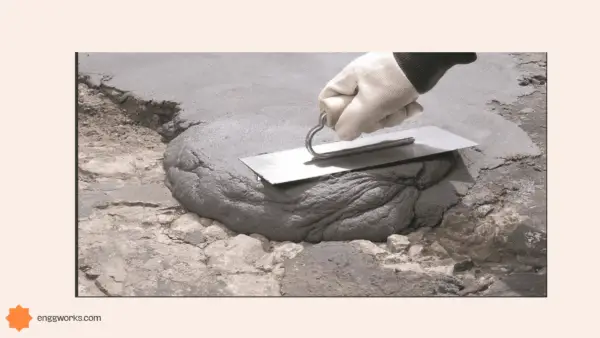Underground construction and excavation projects often require ground improvement techniques to stabilize soft soils prior to and during below-grade works. Two popular methods for achieving underground soil reinforcement are permeation grouting and jet grouting.
The choice between permeation grouting vs jet grouting is a critical decision that can significantly impact the success and cost-effectiveness of a construction project. Permeation grouting and jet grouting are two distinct ground improvement techniques, each with its own unique advantages and disadvantages.
Both of these grouting processes involve injecting stabilizing materials to reinforce the native ground, but they differ significantly in their delivery mechanisms and soil-strengthening effects.
When comparing permeation grouting vs jet grouting, civil engineers must consider factors such as soil conditions, depth requirements, and the desired end-product.
Permeation grouting is generally suitable for soils with higher permeability, while jet grouting can be more effective in less permeable soils. Additionally, jet grouting advantages and disadvantages must be weighed against the permeation grouting approach to determine the most appropriate solution for the project.
Through referenced case studies and application examples, we offer recommendations on ideal site conditions and project parameters for deployment of permeation grouting or jet grouting.

Permeation Grouting vs Jet Grouting Cost
| Parameter | Permeation Grouting | Jet Grouting |
|---|---|---|
| Grouting Materials Used | Specialty acrylamide or sodium silicate chemical grouts | Cement-based suspensions |
| Soil Types Applicable | Effective primarily in fine-grained soils where permeation is possible | Can treat a wide range of soil types including coarser deposits |
| Treatment Method | Grouting by gentle permeation into native soils | Mechanical mixing and soil displacement by high-pressure fluid jets |
| Ground Improvement Effects | Subtle permeation strengthening; lower strength improvement | Robust structural columns; higher compressive strength >600 psi |
| Risk Factors | Minimal ground disturbance but limited depth/volume capabilities | Can upset adjacent structures; deeper and larger treatment volumes |
This summarizes some of the most salient differences in materials used, site conditions suited to, mechanics of soil treatment, effects on soil properties, and inherent risk considerations.
Permeation Grouting vs Jet Grouting Comparison
Understanding these key differentiators assists in appropriate selection between permeation and jet grouting approaches based on specific project requirements and site characterizations.
A major consideration for any construction project is cost. When evaluating permeation grouting versus jet grouting:
- Permeation grouting equipment requires a relatively low initial investment compared to jet grouting rigs. This can make it more feasible for small jobs.
- Material costs are lower for permeation grouting chemical grouts compared to jet grouting cement-based suspensions.
- Permeation grouting is generally more affordable than jet grouting on a per square foot basis due to lower labor and equipment requirements. Expect permeation grouting to cost $15-30 per square foot versus $30-60 per square foot for jet grouting.
So permeation grouting provides a much more cost-effective grouting solution in most situations. Jet grouting costs can be justified for large scale projects where deep soil stabilization is needed.
Which is Better – Jet Grouting or Permeation Grouting?
While cost is a major factor, performance also must be evaluated when choosing between grouting methods. Key comparisons:
- Jet grouting can treat larger volumes of soil in a single pass with columns up to 6 feet in diameter. Permeation grouting relies on slower permeation of chemical grouts.
- Jet grouting provides stronger structural support with compressive strengths over 600 psi. Permeation grouting improves stability but has lower compressive strength.
- Permeation grouting involves lower strength specialty grouts designed to penetrate fine soils. Jet grouting works in a wider range of ground conditions.
So while jet grouting has performance advantages, permeation grouting may provide sufficient improvement at much lower cost in softer fine-grained soils.
Careful geotechnical evaluation is recommended when selecting a grouting technique.
Jet Grouting vs Permeation Grouting
- The US Army Corps of Engineers’ Engineering and Design guide provides an extensive overview of permeation vs jet grouting principles and applications.
- The DC Water Clean Rivers Project specifications document compares grouting methods for a major tunneling project.
- Researchers at the University of Texas at Austin developed a report on grouting for underground construction across different soil types.
Advantages of Jet Grouting vs Permeation Grouting
Key benefits that jet grouting can provide over permeation techniques include:
- Greater depths of treatment – Jet grouting can treat up to 130 feet deep in a single pass.
- Higher strength improvement – Jet grout columns provide targeted reinforcement with unconfined compressive strength exceeding 600 psi.
- Larger soil volumes – The drilling jets of jet grouting equipment can treat 5-6 foot diameter areas.
- Quicker treatment – The high-pressure jet grouting leads to faster soil stabilization than permeating chemical grouts.
So where structural solutions are needed across large volumes of variable soils, jet grouting delivers advantages over the more subtle permeation grouting method.
Disadvantages of Permeation Grouting vs Jet Grouting
No grouting method is perfectly suited to every site scenario. Some limitations to consider:
- Permeation grouting is less effective in broad gravelly or coarse soils that resist flow of chemical grouts.
- Jet grouting often requires drilling pilot holes first which slows production rates.
- Specialty chemical grouts can have environmental considerations for permeation techniques.
- The vigorous nature of jet grouting has more risk of upsetting adjacent structures or services compared to gentle permeation grouting.
Careful soil analysis minimizes these disadvantages during the critical phase of technique selection.
Permeation Grouting vs Jet Grouting Case Study
The West Lake Hills pipelines project in Austin, Texas provides an interesting case study contrasting these two grouting methods:
- Highly variable geology ranging from soft clays to solid limestone made permeation grouting impractical for the entire alignment.
- Jet grouting was selected for most areas due to the wide range of soil conditions and need for structural support capacity during tunneling works.
- Permeation grouting was only utilized for isolated zones of loose/medium clays where soil permeability allowed distribution of chemical grouts.
This demonstrates a common compromise, where a combination of jet grouting and permeation grouting is deployed across changing geology to optimize grouting performance and cost-efficiency.
When to Use Jet Grouting vs Permeation Grouting
So when should each grouting method be deployed?
Jet Grouting Tends to be Better Suited to:
- Broad range of soil/rock types
- Structural support applications
- Pre-excavation ground improvement
- Deep treatment depths
Permeation Grouting Tends to be Better for:
- Low-permeability fine soils
- Sensitive adjacent infrastructure
- Affordability over structural strength
Of course, sites may present intermediate conditions where either method could be viable. Proper geotechnical investigation is key during design to leverage the best techniques for the geoconditions and project goals.
Permeation Grouting vs Jet Grouting for Underpinning
Where building underpinning is required, both grouting methods play important roles:
Permeation Grouting for Underpinning:
- Gently fills voids and enhances stability with minimal disruption.
- Works well for injection beneath shallow foundations.
Jet Grouting for Underpinning:
- Creates strong reinforced columns to enhance structural capacity below footings.
- Can provide “root piles” supporting buildings above unstable soils.
For even difficult below-grade conditions like subsurface karst formation, a dual approach combines gentle permeation grouting with targeted high-capacity jet grout columns.
Conclusion
In summary, while jet grouting can clearly perform structural ground improvement well beyond the capabilities of permeation grouting, it comes at substantially higher cost.
Permeation grouting provides an affordable method for gently improving soil stability in finer grained deposits.
The variable nature of subsurface geology often dictates a combined approach for optimized cost and performance.
Careful geotechnical investigation helps guide appropriate grouting choice across site conditions and project requirements. By understanding the nuances of these techniques, engineers can make informed decisions that optimize project outcomes and ensure the long-term sustainability of their constructions.
Both permeation and jet grouting will continue serving critical roles advancing foundation and underground construction capabilities.






